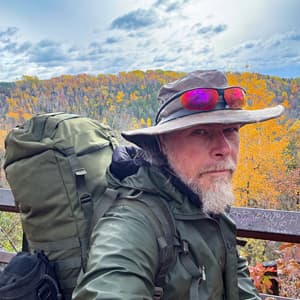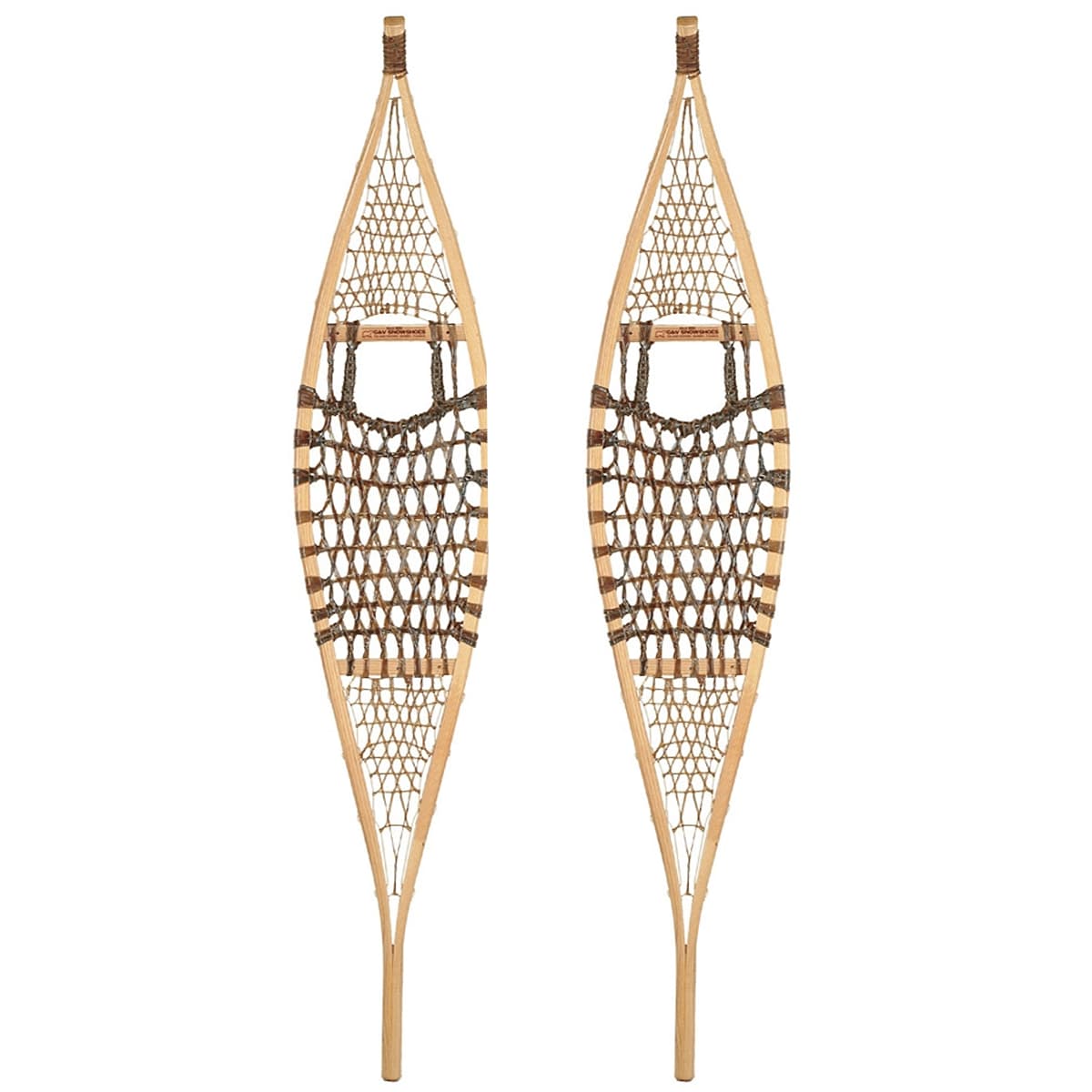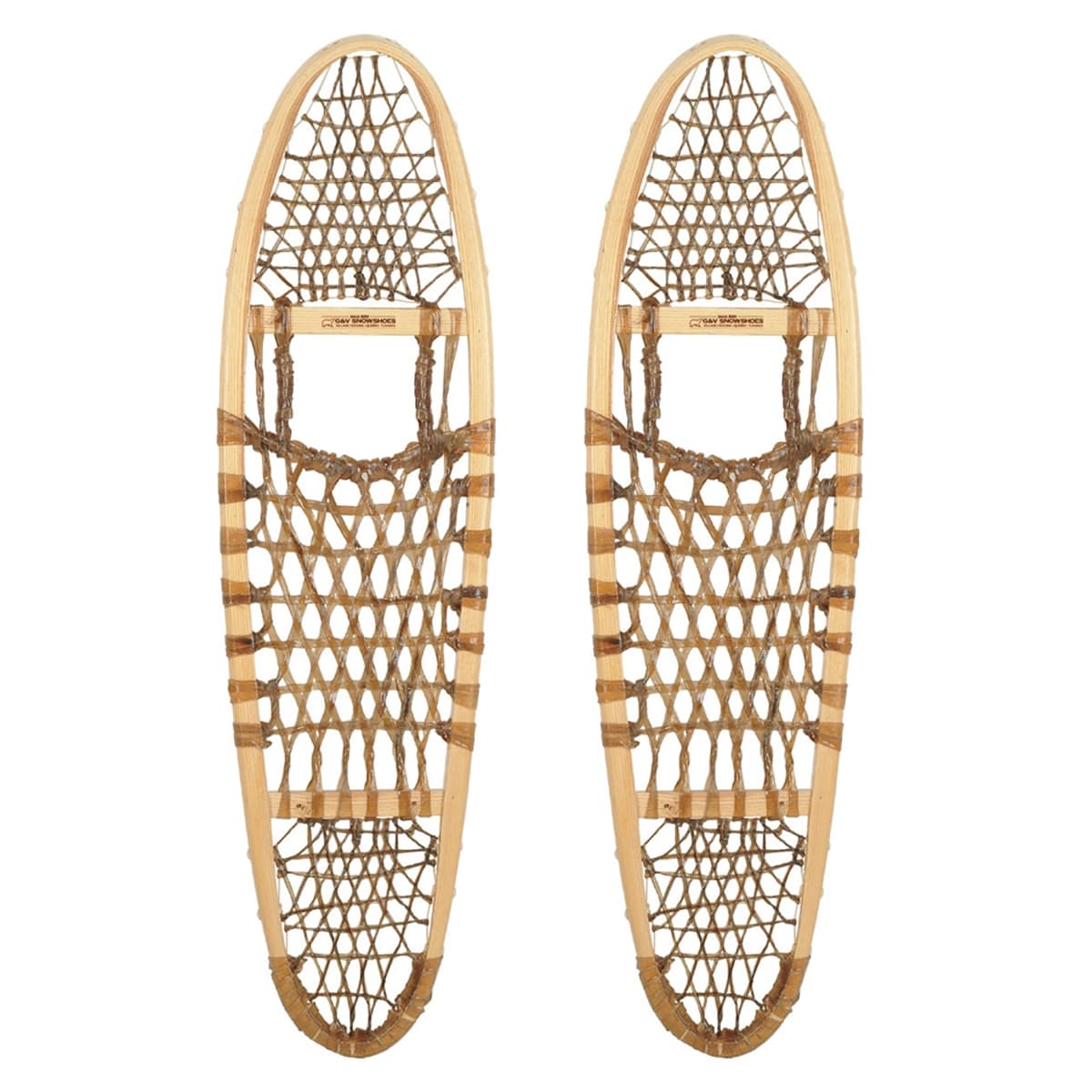How To Choose The Right Style Of Snowshoe
We’re fans of Traditional Style Snowshoes: wood and hide (babiche). We sell only full grain babiche snowshoes (not split grain, as this makes for stronger babiche) which offer superior flotation over the smaller, modern plastic snowshoes. While they do require maintenance, it’s minimal and they offer the ability to be repaired when damaged.
Size of the shoe is determined by the overall weight of the wearer (body weight, plus boots, packs, etc) and to a certain degree the wearer’s height (where weight would work with multiple sizes of ‘shoes, shorter users may prefer smaller sizes). Primarily though, it will be the full weight of the traveler and their gear that matters most.
Snowshoe sizes come expressed as 14x42 or 16x42, etc based on the dimensions (width and length in inches) of the snowshoe. The style of 'shoe will be determined by the terrain you’ll be travelling on.
| Snowshoe Style | Has Tail? | Best Terrain Style | Weight Capacity | Full Grain Babiche |
|---|---|---|---|---|
| Modified Bear Paw | No | Heavy Forest/Inclines | 100 - 300 lbs | Yes |
| 10" x 30" | 100 - 200 lbs | |||
| 10" x 36" | 125 - 250 lbs | |||
| 11" x 40" | 150 - 300 lbs | |||
| Ojibwe (Ojibway) | Yes | Open Lakes/Fields | 100 - 300 lbs | Yes |
| 11" x 48" | 100 - 200 lbs | |||
| 12" x 60" | 150 - 300 lbs | |||
| Huron (Sport) | Yes | Mix of Open Areas and Forest | 50 - 350 lbs | Yes |
| 9" x 29" | 0 - 50 lbs | |||
| 11" x 36" | 75 - 150 lbs | |||
| 12’ x 42" | 100 - 200 lbs | |||
| 14" x 42" | 125 - 250 lbs | |||
| 14" x 48" | 150 - 300 lbs | |||
| 16" x 48" | 175 - 350 lbs |
Bear Paw Style Snowshoes
Bear Paw Style Snowshoes are best used in heavily forested areas, as turning around or stepping over fallen logs, etc is easily accomplished with this style. This type of 'shoe is also good for climbing hills or inclines. The downside is that they do not support a walking gait; the wearer must walk bow-legged. Hence the Modified Bear Paw Snowshoe, which is like the Bear Paw in overall shape, but with narrowed sides to allow for a normal walking gait.
Ojibwe Snowshoes
At the other end of the spectrum, we have the Ojibwe Snowshoe. This 'shoe approaches a ski in terms of function. As with all snowshoes, the heel drags when walking. Having a tail allows it to glide, reducing drag and effort over long distances. The curled front keeps the tip above the snowline, which is especially handy when there’s a thin crust of ice so you don't trip. Ojibwes are best in wide open areas such as frozen lakes or fields.Huron Snowshoes
Huron Snowshoes are like a cross between the Ojibwe and the Bear Paw. They have a tail for glide but have a stouter snout. They’re especially good for mixed terrain of open areas (lakes, fields) and forested areas. This makes them ideal for the area we’re in (Southern Ontario, Southern Quebec, Northeastern USA).Types of Snowshoe Bindings
We also sell a couple different styles of binding: Snowshoe Work Bindings or Snowshoe Sport Bindings.
Work bindings are the easiest to get in and out of, and do not require the use of exposed fingers (which is very handy on cold days). Work bindings are very secure once you’re cinched in, and easily fit winter or hiking boots. Hiking boots with a gator are generally better than winter boots as they are less heavy.
Sport bindings are for use when using very large footgear (larger than the work binding width) or when using mukluks as foot gear instead of hiking or winter boots. Mukluks provide the most lightweight footgear for snowshoeing.
How to Maintain Your Snowshoes
The maintenance required on traditional snowshoes is pretty painless. Hang them up and apply marine varnish (SPAR Urethane) on the whole shoe (except the bindings) - so the wood and the babiche at the end of the season. Any repairs to the babiche can be facilitated with a repair kit, which just involves soaking babiche so it becomes flexible, and then tying it in where the babiche has been damaged. Taking good care of your ‘shoes in this manner will provide use for decades to come.
Shop The Gear
Tim Foley

Tim grew up spending summers and much of his spare time in the backwoods of Northern Ontario and has been canoeing, camping and hiking ever since. When not running the Canadian Outdoor Equipment Co., you can find him riding his bike, hiking the Bruce Trail, canoeing, or clearing trails, cutting firewood and testing gear out in the bush.



